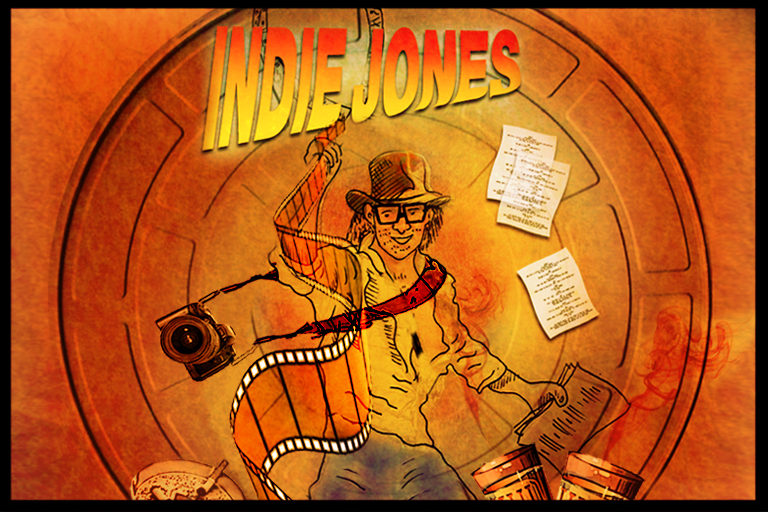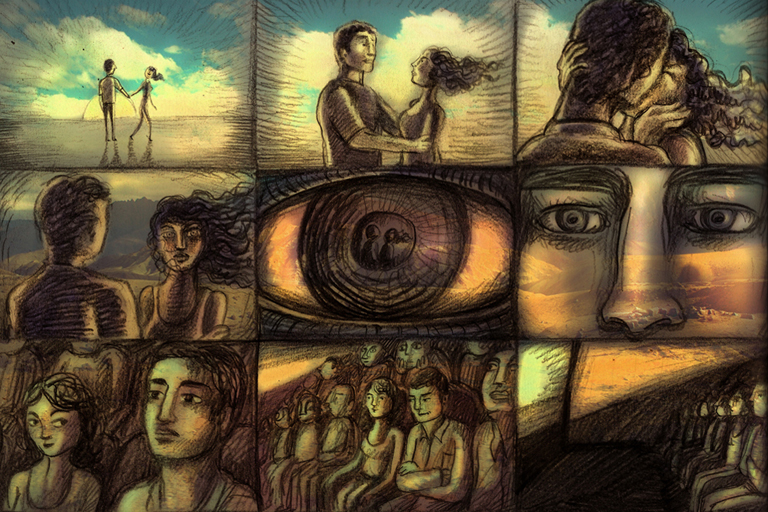
The myths, trials and triumphs of the Indian indie. A narrative report
Also read: “The impression is that filmmakers are rich people.” Information and Broadcasting Minister Ambika Soni answers our questions on what the Indian government is doing for independent cinema
28 year old Karan Gour is setting his second film in a fictional nation.
He has a pact with other filmmakers who will follow in his act and set
their films in this ‘country’ too. The idea came about when Gour was
spending time with a group of Indonesian and Singaporean independent
filmmakers he met at the Shanghai International Film Festival. They were
lost on the streets of Shanghai. No one understood the languages they
spoke, not even the address they read out, because their accents made it
unintelligible.
He thinks of it as building an imaginary nation for independent
filmmakers. “It’s a large piece of land that exists between the US and
the UK,” he says. “A First World country.” We’re at his one-bedroom flat
in Andheri, Mumbai. All that’s in it is a mattress, a wobbly table that’s
holding Gour’s Macbook Pro and the 2 chairs that we’re sitting on. Paint
peels off the walls. Gour is wearing a faded T-shirt and a pair of shorts.
He asks me for a cigarette.
“It doesn’t have any history or culture,” he says. “We’ll create it as we
go along.” He says he’ll begin building it, then other filmmakers will take
over. “I’ll define some things in this movie. Where a specific city area
ends. Things like that.” Another filmmaker will determine what lies around
that city. Yet another will decide what the people are like and “who
conquered what, back in the days… “. Gour’s nation might be in its
nascent stages but he is very excited at the prospect of having a place in
the world for independent cinema– even if imaginary.
There’s no phrase more bandied in the Indian film media today
than ‘independent cinema’. Or ‘indie’ cinema. The Indian indie. The
hindie. The last coinage, often credited to Toronto International Film
Festival (TIFF) Artistic Director Cameron Bailey, refers to relatively
small budget, offbeat Hindi feature films, with no big Bollywood stars.
But Indian independent cinema could mean much more. It could mean
shorts, documentaries and of course alternative films in regional Indian
languages.
The focus here, however, is to look into Hindi, or English, or Hindi and
English feature films that aspire to provide a counterpoint to standard
Bollywood fare.
Here too the lines could blur. This Indian indie could be one of the 11
films, made on shoestring budgets, with barely recognizable actors,
and granted limited releases this year in an initiative, launched by one
of the country’s leading multiplex chains, called PVR Director’s Rare. Or
it could mean six off-beat films, with budgets higher than these but
lower than Bollywood blockbusters, mostly without stars, which have
seen mainstream releases this year, and critical as well as commercial
success.
One of the latter films is Gangs Of Wasseypur (GOW). While Guneet
Monga, one of its producers, calls it an independent film Manoj Bajpai,
who plays a key role in it, says in the Times Of India: “While Black Friday
and Paanch by Anurag (Kashyap – the director) were independent films,
GOW falls under the category of ‘new wave Indian cinema’.” As if defining
one new phrase wasn’t hard enough.
The Western definition of independent cinema is, simply, the films
produced mostly, or entirely, outside the six major US studios:
Paramount, Warner Bros., Walt Disney/Touchstone, Columbia, Universal
and 20th Century Fox.
In India independent cinema, like everything else, is harder to define.
The studio system crumbled in the fifties. A system of stars and formulae
emerged in its place which guarantees, in most cases, that a film will
command a decent profitability. The best way to define the Indian indie
is to say that it seeks to be independent of this system. It does not aim
to make a movie that appeals to the maximum number for the maximum
profit. It aims to sustain.
This isn’t new. Hindi movie watchers had an ‘art’ cinema, way back in
the 1940s, with filmmakers like V Shantaram and Chetan Anand. And
a ‘parallel’ cinema after that, with filmmakers like Shyam Benegal, Govind
Nihalani and Saeed Mirza. “We disliked the term ‘parallel’ because it
seemed to assume that mass audiences would dislike our films,” says
Shyam Benegal. “But today you see Bollywood being influenced by Indian
off-beat films and trying to break out of its own formulae. This was
unheard of in our times. Perhaps that’s why– ‘parallel’.”
The Hindi independent cinema made today sets itself apart from the
parallel movement of the 70’s in more than one way. Its abbreviation of
‘hindie’ is an attempted infusion of coolth. It signifies a wider audience
that its makers see for it as compared to that of its predecessors,
generated by the proliferation of multiplexes and the internet. This
audience is mostly young and either exposed to world trends, or aspiring
to be. And there is a greater distinction. India’s art and parallel cinema
subscribed to a left leaning socio-political world view, however subtly
contextualized, and was often influenced by the new cinema being
made in Europe at the time. The hindie, subject to a wider and more
contemporary range of cinematic influences, prides itself on being
independent of political and moral obligations.
Some filmmakers would prefer to narrow this definition of independent
cinema down to the money it is made with. They would say an indie
has to be made cheap with money from sources who are removed from
the network of financiers and producers who fund Bollywood. But this trounces any hope of independent cinema evolving into a self-sustaining economy. Even in countries like the US, where the indie movement clearly avoids the major studios, an independent film like Sex, Lies, and Videotape had to be produced by a Robert F. Newmeyer (who was Vice President at Columbia Pictures before this), before it ushered in the cinematic revolution ascribed to it. In India, while independent films have been funded through crowdfunding or investors who’ve never invested in a film before – often the filmmakers themselves or their friends and family, we also have stories of a UTV financing Dibakar Banerjee’s no-star, small-budget debut Khosla Ka Ghosla. Or of a Bohra Brothers, which has spent half a century making mainstream Hindi movies, backing Hansal Mehta’s Shahid or Bejoy Nambiar’s Shaitan.
The apparent flourishing of Indian independent cinema in the last five
years has been put down to the rise or resurrection of institutions
that have broken existing rules, and laid out new ones. While this is
heartening, there is much to be done, and much to be watched out for.
While more exciting Indian independent films seem to be coming to the
fore today than earlier only a few actually push the envelope and make
for excellent cinema. Fewer find the distribution and exhibition outlets
they deserve. And some of the institutions spearheading this change
may just be discarding one set of formulae only to instill in their place
another.



